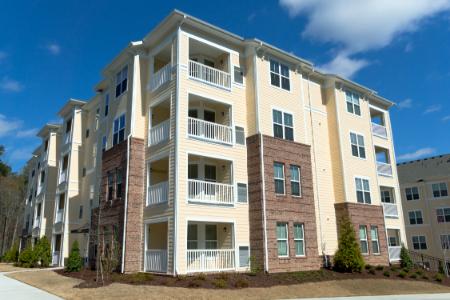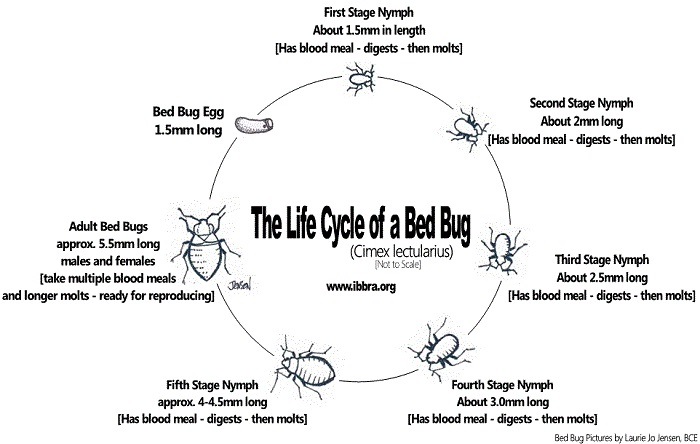Bed Bug Extermination in Toronto for Multi-Unit Dwellings, Condos, & Apartments

Bed bugs are rapidly resurging and capturing the attention of many countries throughout the world. It is essential that accurate knowledge of bed bugs, their habits, biology, reproduction, effective treatments and prevention strategies will assist in reducing the incidence of bed bug infestations worldwide. At Bed Bug Authority Canada, we use a "heat treatment" method for bed bug extermination in Toronto and the surrounding areas of Ontario. This method is very effective for multi-unit dwellings.
Click here for a Bed Bug Fact Sheet for Multi-Unit Properties
Every living organism has a thermal death point. The same process for treating bed bugs will also kill, and in some cases, completely eradicate other organisms. Generally speaking, treatments with air temperatures of 66˚C/150˚F for 2 hours will be lethal for most organisms. In laboratory testing with Dr. Walter Ebling, professor of entomology at UCLA, nearly all metamorphic stages of insects died at 120˚F in 30 minutes or less, except for the egg stage. We heat for at least 4 hours.
The eggs required an hour at this temperature. Remember, field conditions are not controlled as are conditions in the lab. The times and temperatures listed in the Compendium are not generic air temperatures. These conditions must be met where the organism is found and may require significantly more time to reach the stated thermal levels.
The compendium (linked to below) includes common microorganisms and insects and also lists many less common organisms. These include insects, bacteria, fungi, protozoa, helminths, and viruses. Many of these are human pathogens, and a number of them are considered pathogens for animal, avian or plant, or some combination.
This information comes from studies for food pasteurization, sewage treatment, pest control, soil pasteurization and compost and timber sterilization. This Compendium also includes additional results from recent field studies by Dr. Michael R. Linford.
The cited thermal death points for any given organism may vary from source to source because control parameters and study conditions may vary from study to study.
Why We Use Chemical Pesticides for Bed Bugs in Multi-Unit Dwellings?
Some strains of insects can build up a resistance to certain pesticides if they have been exposed to low non-lethal doses in the past. If this is the case the bugs become agitated instead of exterminated and disperse as a result.
Multiple applications over set time intervals are necessary for pesticides to succeed. There is never instant gratification. Different types of insecticide can be used on a trial and error bases to achieve the desired result. A phrase commonly used in the trade to refer to this process is “Spray and Pray”.
Residual pesticides can also leave a residue that may last up to 90 days. The mechanical aspect of a desiccant dust can be effective indefinitely, as it is organic. If a bug walks through the residue, it will have an adverse effect on it, which leads to death.
Heat Treatment Methods for Bed Bug Extermination in Toronto's Multi-Unit Dwellings
Bed bugs have a zero tolerance to heat once the lethal temperature is achieved.Once the temperature of a heat treatment cools it is no longer effective, this is the one disadvantage of heat over a chemical treatment from an extermination point of view. There are a few different types of heating systems for bed bug extermination in Toronto and the surrounding areas: Steam (for spot treatment), electric, heat transfer fluid, and gas heaters.
-
Electric heaters (20,000 to 60,000btu) are dependent on a high current, power supply not usually available in a domestic structure. The resulting performance is slow heating up period (> 1hr) and low maximum temperature 54C (130F), although sufficient to kill a bug maybe not to saturate an item of furniture where a bug will hide and maybe migrate to avoid the heat.
-
Heat transfer fluid is dependent on a trailer mounted boiler (500,000btu), diesel generator that is parked outside the home. This unit will heat a fluid (glycol) that is pumped through hoses into the affected area where the heat is transferred through a heat exchanger or radiator. There are many inherent inefficiencies in this system causing it to be slow at heating up (>1hr) to reach 50C (122 F) barely lethal, the maximum temp achieved is 60C (140F) over the next few hours.
-
The Propane system is similar to a home forced air gas furnace, with stand-alone heaters each having an output capacity of 500,000 btu (an average home furnace has an output of 70,000 btu). The flexibility of this system allows the use of multiple heaters so a home’s internal temperature can be raised to 65C (150F) in half a hour, giving bugs minimal chance to relocate.
-
Integrated pest management is a method of dealing with a problem using several key practices in combination which include education, prevention, monitoring along with actual extermination and maintaining a clear status.
Our heat treatment method is especially effective in a multi-unit dwelling. It employs the application of a desiccant dust under and behind perimeter wall baseboards, followed by the post heat application of a liquid residual on top of the desiccant. This, along with a high performing heating system, minimizes the risk of migration into other units.
The use of a canine service can not only identify the existence of a problem but also verify the success of bed bug removal.
Condos, Apartments, and Other Multi-Unit Dwellings
The method our Toronto bed bug heat treatment professionals use for multi-unit dwelling involves a combination of thermal remediation and chemical pesticide application.
Prior to the heating process a desiccant dust is applied (using a precision power tool) under and behind the base boards of the perimeter walls. This is a barrier to prevent migration of escaping bugs through the walls. The temperature is then raised to a lethal point, totally eradicating all living organisms within the unit and its contents.
Latest Multi-Unit Dwelling, Conod, & Apartment Tips
When it comes to bed bugs, the type of dwelling being treated makes a difference. Think about how different it would be to find bed bugs in a house compared to a hotel.
There’s a lot more rooms involved and many more spaces to check, […]
Read Tips
s

